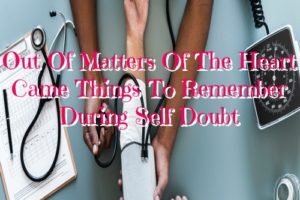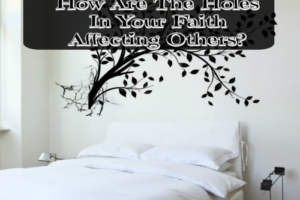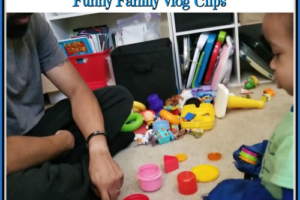Signs That Your Child May Need Glasses And Useful Resources
My six-year-old daughter loves to read. So when I noticed a drastic drop off in her need for exploring through books (that’s what she says), I knew something was up. She would still read, but she was not spending nearly as long doing so.
When we took her to the optician, he said her brain and eyes are still learning to work together. Of course, I googled it and found that according to Dr. Christina Weng, assistant professor of ophthalmology at Baylor, “There is a period- approximately the first eight years of life- when the brain and eye are learning to work together, and the visual system is still developing.” She also said that noticing signs of vision loss is significant in young children because not catching certain eye problems may lead to permanent vision loss! ![]()
She had a yearly Physician’s check-ups. But I suppose because that’s not their specialty, her eye problems were missed.
My At Home Test
Before getting her eyes actually tested I decided to run my mom test on her. (Disclaimer: But as a parent, you should not take on the role of a vision screener or health provider. Please see a licensed professional.) This test is appropriate, I suppose, if your child knows how to count. I stood about seven feet away from here and held up my fingers. Then I asked her to tell me how much fingers I was holding up. Her younger sister was rattling off the numbers. Time and time again she got them wrong. Of course, her younger sister was watching her with the most puzzled look. After all, we don’t call her ‘Miss’ for no reason. I knew right away she needed glasses.
Even though my husband and I don’t have any known eye diseases in the family, we both wear glasses for other reasons. So I cannot say I was surprised.
Am just glad she took it like a champ and was actually excited about the entire process. Plus the eye technician at our healthcare facility was terrific!
So check with your healthcare provider to see if vision services are covered.![]()
My Daughter’s Experience
She had fun with the process. And I am glad that she did. Below is what her line up of choices was. She loves My Little Pony. So Now not only does she have her favorite My Little Pony backpack, she got her pick her glasses to match. Join us on Instagram where you can see more photos and her final pick!

Here Are The Signs To Look Out For:
- Eye Squinting
- Rubbing of eyes
- Excessive blinking
- Sitting too close to the television
- Tripping\Bumping into things
- Using one eye by covering the other to read or watch television
- Unable to maintain gaze
- Poor academic performance or a sudden drop in grades\reading
- Holding a book too close or too far away when reading
- having to sit at the front of the class at school
- If your child always sits to the back of the class (they might have too much pride to say they can’t see) (I know someone who said this was them as a child.)
- Headaches
- Tearing
- Light Sensitivity
- Inability to focus/ Behavioral issues
- Your child complains they cannot see the board at school
The earlier issues are detected, ensures that your child’s eye problems have minimal impact on their lives.
When should kids have their eyes examined?
This scenario would be the ideal timeline. However, we all know, life happens. You should have your newborn examined for general eye health by a pediatrician or family physician in the hospital nursery. Also during checkups in their first year of life. Then at age 3. And then again at kindergarten age, which would be 5 or 6 years of age. After the age of 5 routine screenings should be done. A good time might be before each new school year begins.
Resources
- FREE: Check out the nearest InfantSEE Clinic near you for free checkups for babies 6-12 months old.
- Vision To Learn offers FREE eye exams and FREE prescription glasses to students in low-income households. They are located in:
- Northern and Southern California
- Delaware
- Georgia
- Hawaii
- Iowa
- Maryland
- Michigan
- Mississippi
- New Jersey
- Children’s Health Insurance Program (CHIP)- this is a state and federal partnership program. It provides low-cost health coverage for kids in families who earn too much to qualify for Medicaid but cannot afford to purchase private insurance coverage. You can check out their website here.
- If you qualify for Medicaid, then the kids may be eligible for Children’s Medicaid.
- You can get FREE Eyeglasses from VSP Global. Their Sight for Students program provides free glasses to low-income, uninsured children. It is a national program that operates through community partners. They identify children in need and VSP network doctors offer the service. Get more information on their website here.
- Get FREE Eyeglasses from New Eyes. They provide free eyeglasses for the needy. (Great place to donate your old glasses!) Visit their website here.
- You can do a free online test just to get an idea if your child is having vision issues. Just google, and you will find quite a few options.
- If you live in Texas, Eye Care For Kids helps students from Pre-K through high school with vision health. They provide free Vision Screening free Eye Exams and Glasses. It is only available in six counties, however, so check their website for more info!
Books To Help Them Feel Comfortable
This is a new experience for them. And not all kids might be excited about this new journey. Here are a few children’s books about wearing glasses that can help them feel a bit more comfortable. Click on any image to see what other parents had to say about that book. (Disclaimer: Affiliate links)
Fancy Nancy: Spectacular Spectacles
Thankfully our daughter now has what she needs now to help her see clearly. Wishing you the best in your child’s journey to achieving clearer vision.
Until next time, take care!

Signs That Your Child May Need Glasses And Useful Resources To Help


















What are your thoughts?